The first metal to be found by men in the so-called Metal Age, over 10,000 years ago, copper has since been used in numerous diverse ways: for the manufacture of tools and weapons, jewelery, automotive parts, and electrical systems. In architecture, copper coatings are greatly appreciated for their gracefully aging aesthetics, the signature greenish patina, and durability. Copper is not only literally, but also metaphorically green: the material can be recycled infinitely, practically without losing its properties, which makes it highly reusable for future generations.
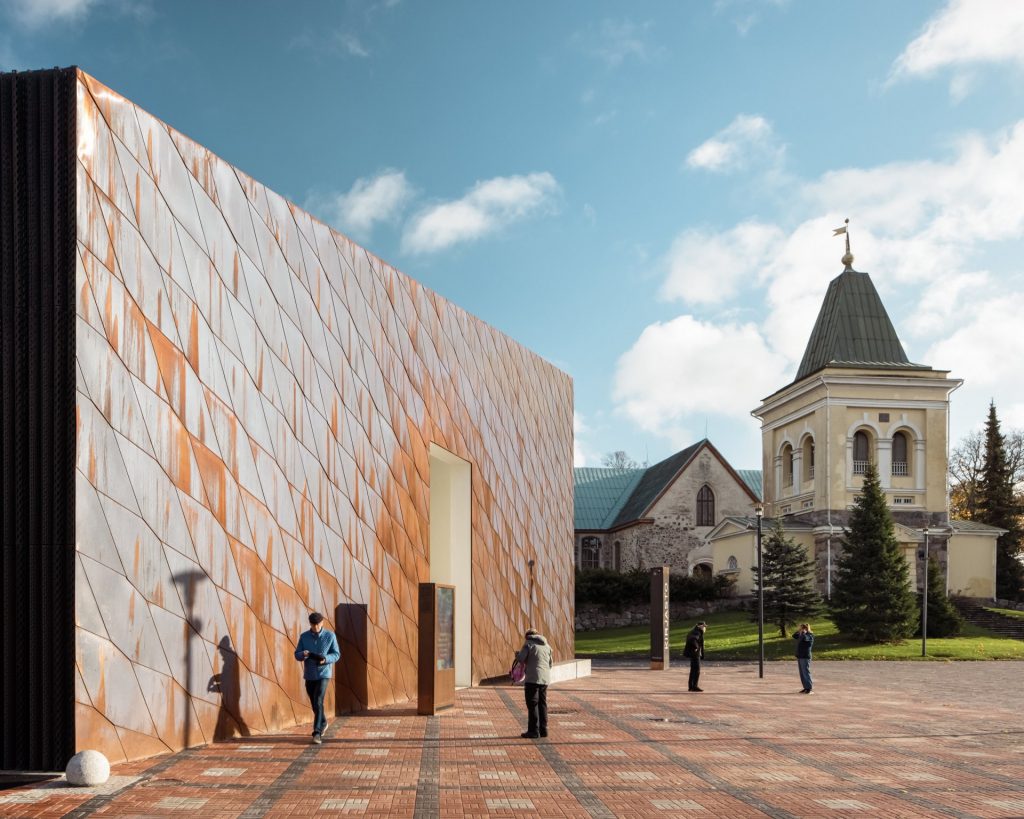
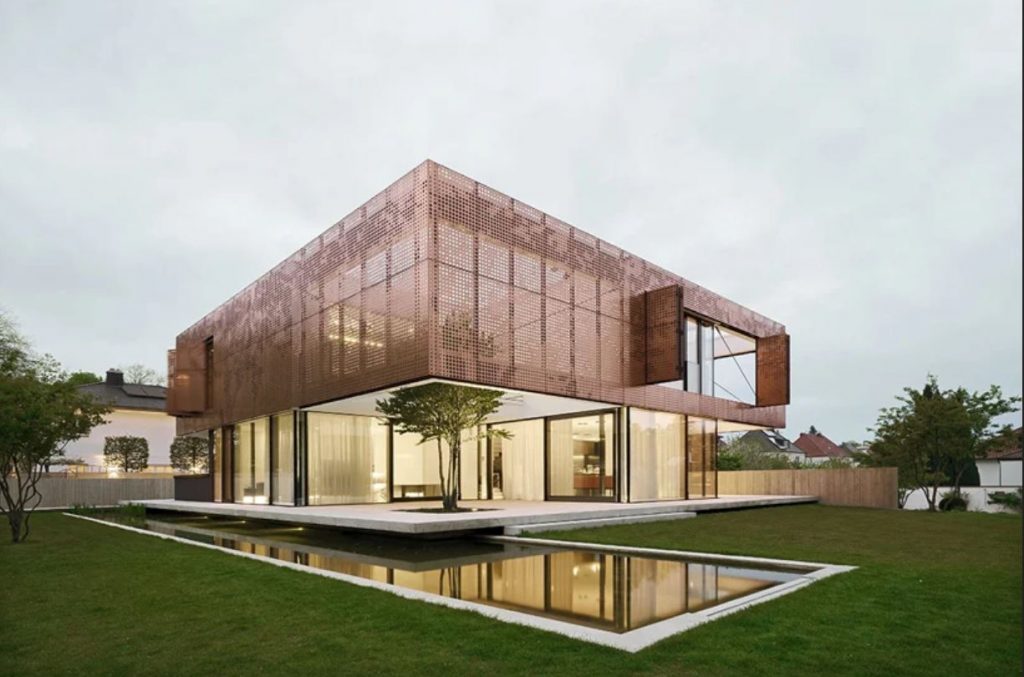
Residence by Liebel Architekten
German studio Liebel Architekten has clad a compact residence in Niederbayern (Lower Bavaria), Germany, in a vibrant façade of perforated copper. The house is divided in two floors in ascending level of privacy – while an open ground floor accommodates shared living areas, the upper floor provides more privacy featuring bedrooms and bathrooms.
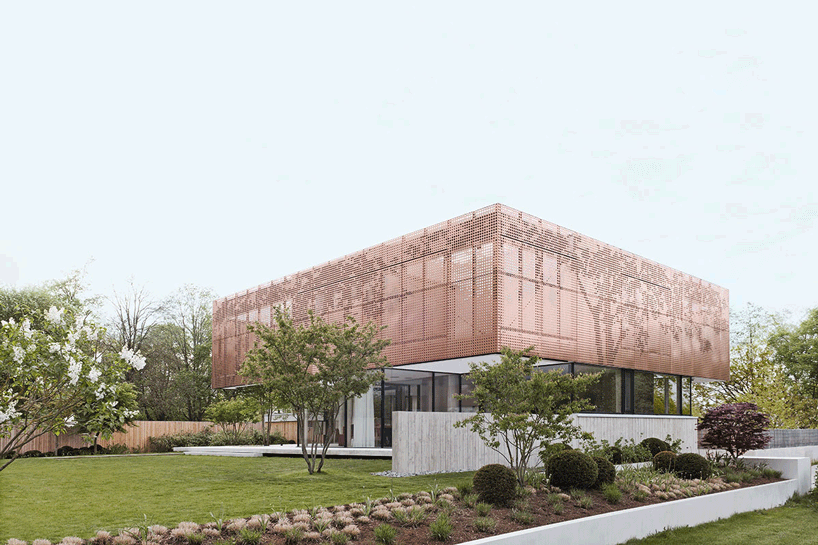
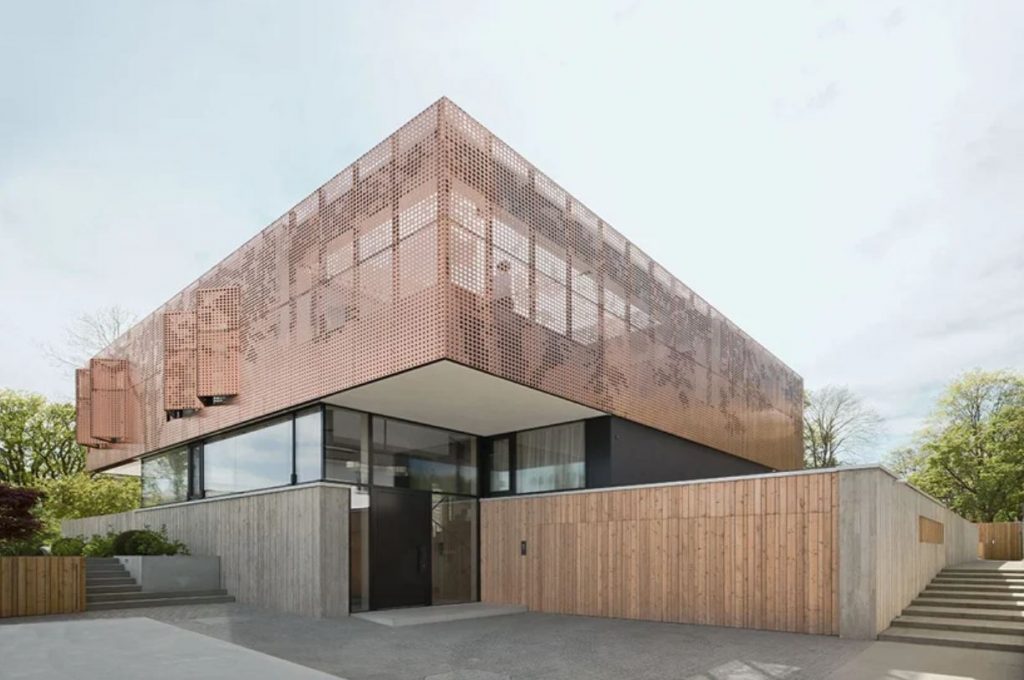
Residence by Liebel Architekten
The copper shell of warm pink allows the design to adapt to the mood of the residents with openable elements, offering two possibilities: openness and views; or retreat and security. The perforated pattern provides beautiful play of light and shadow, as the sun moves during the day.
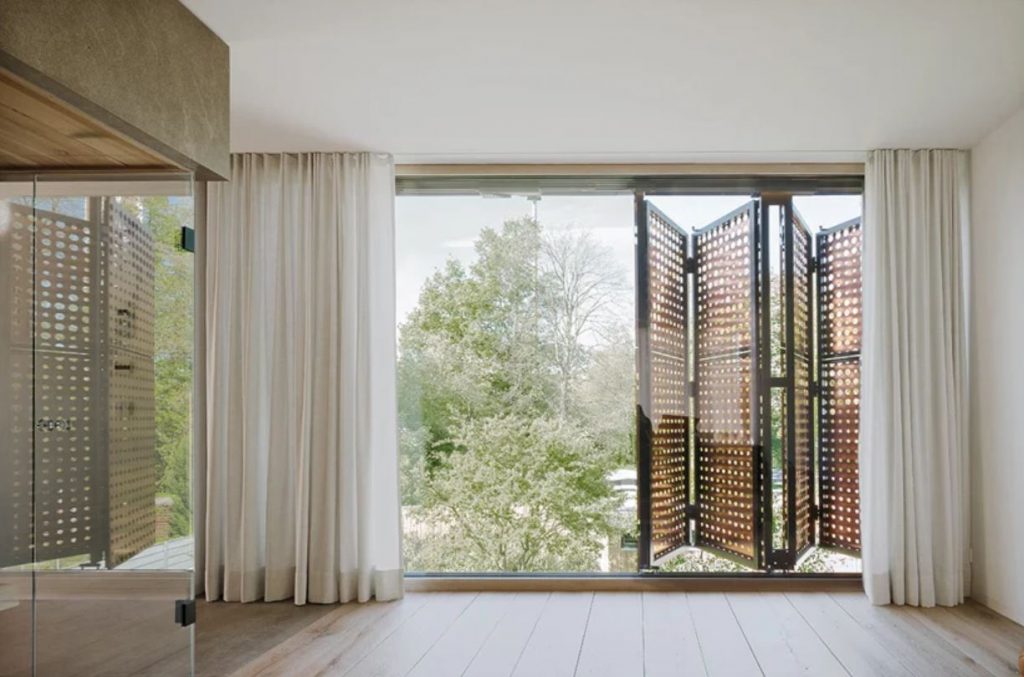
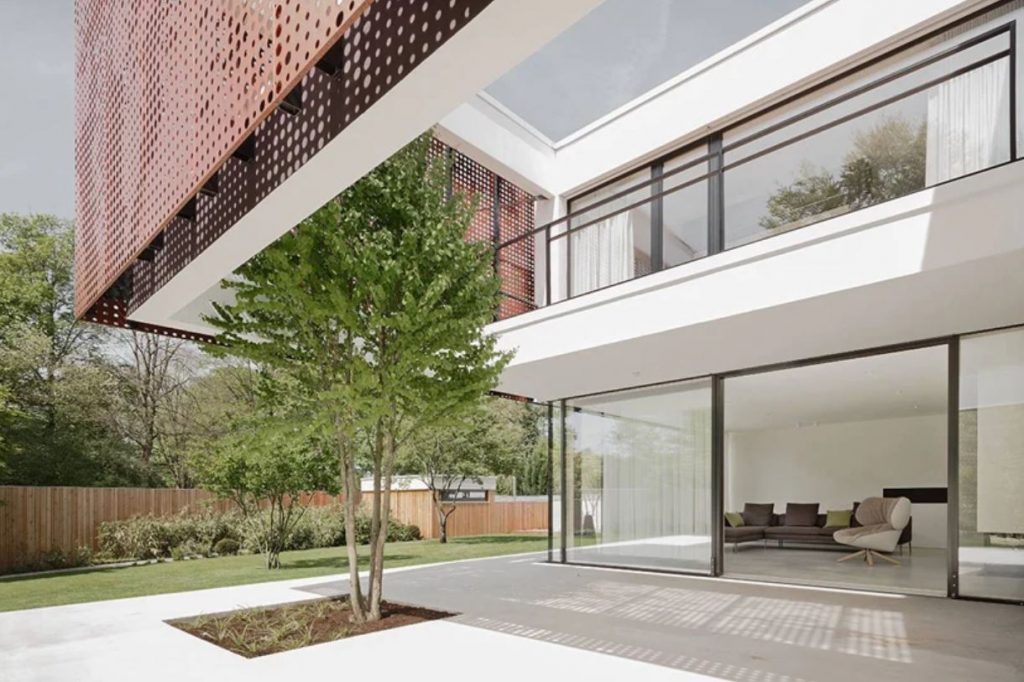
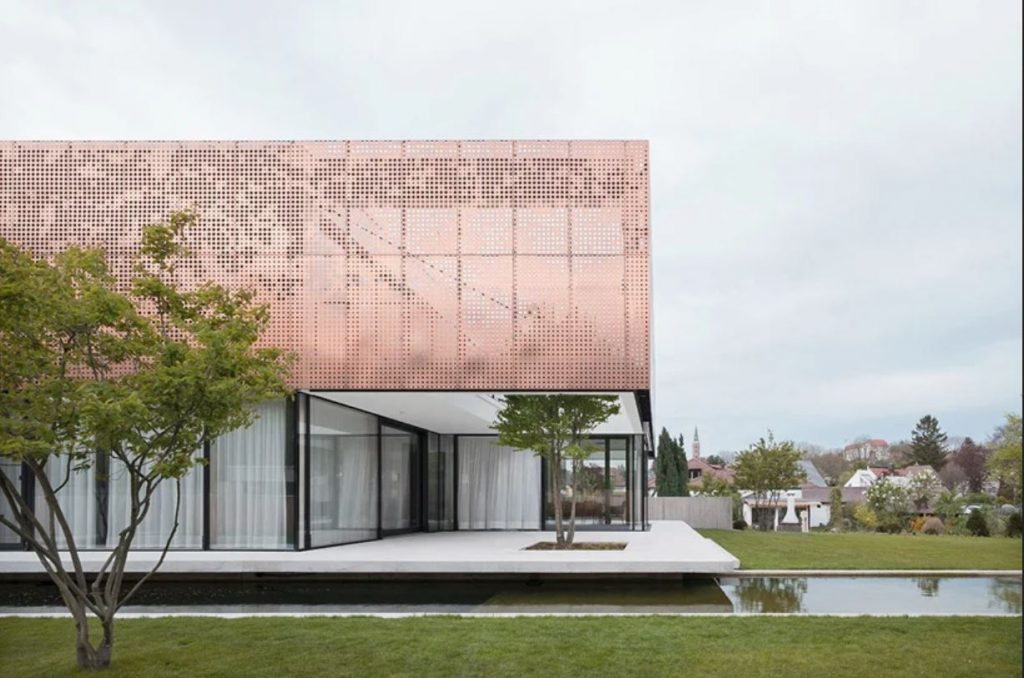
Residence by Liebel Architekten
The ground floor area is surrounded by various terraces, some of them remaining hidden behind the copper façade, which makes the transition from interior to exterior seamlessly smooth. At the same time, the façade encloses an open terrace within the layout of the house, where a large tree grows towards the upper level and through the opening in the roof.
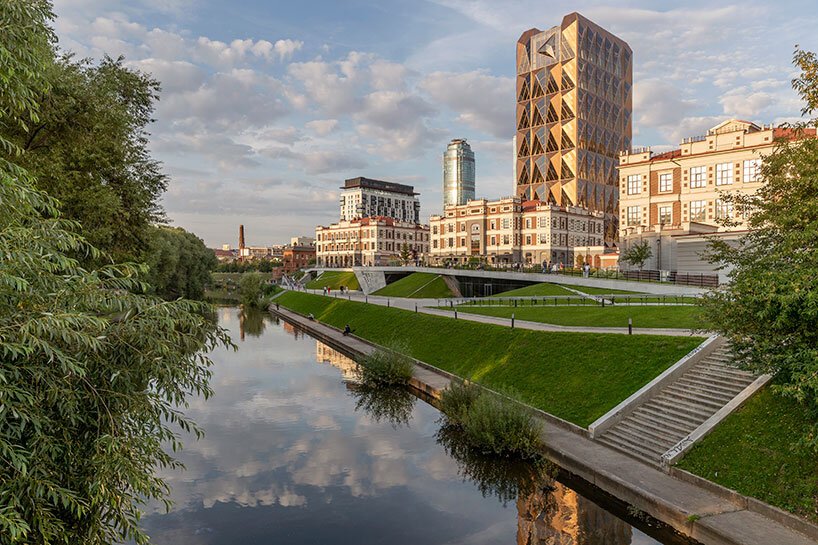
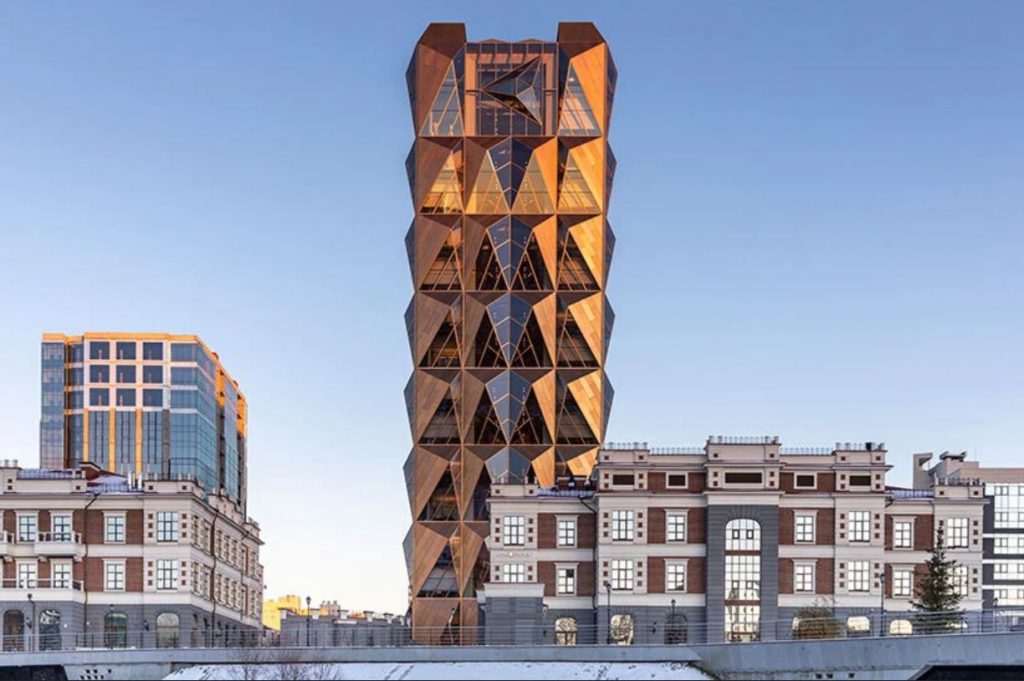
RCC headquarters by Foster + Partners
Foster + Partners has used copper cladding for their first project in Russia – the newly opened headquarters for RCC (Russian Copper Company) in Ekaterinburg. Aiming to celebrate RCC’s expertise as one of the world’s leading producers of copper, the team has wrapped the 15-storey building into a faceted copper façade, its triangulated geometry taking cues from the crystal lattice structure of the metal.
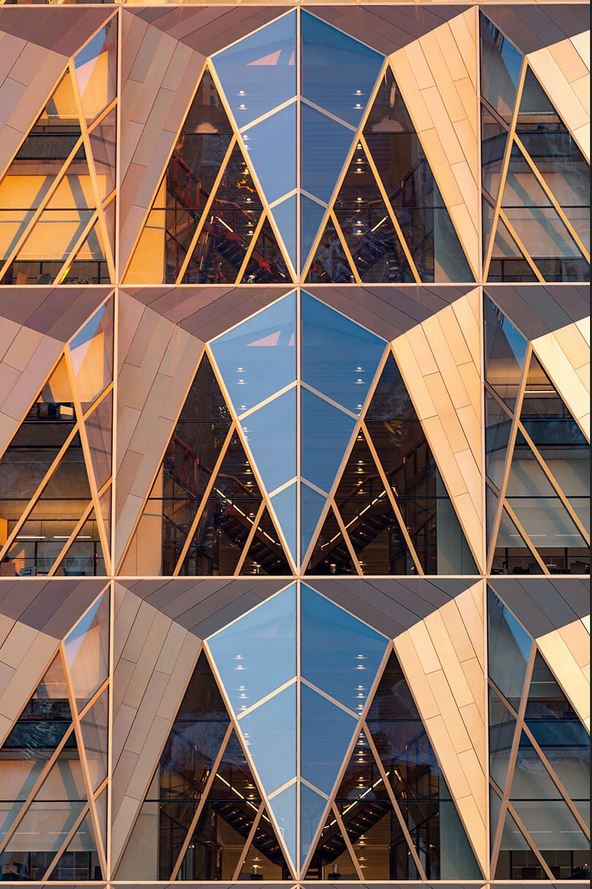
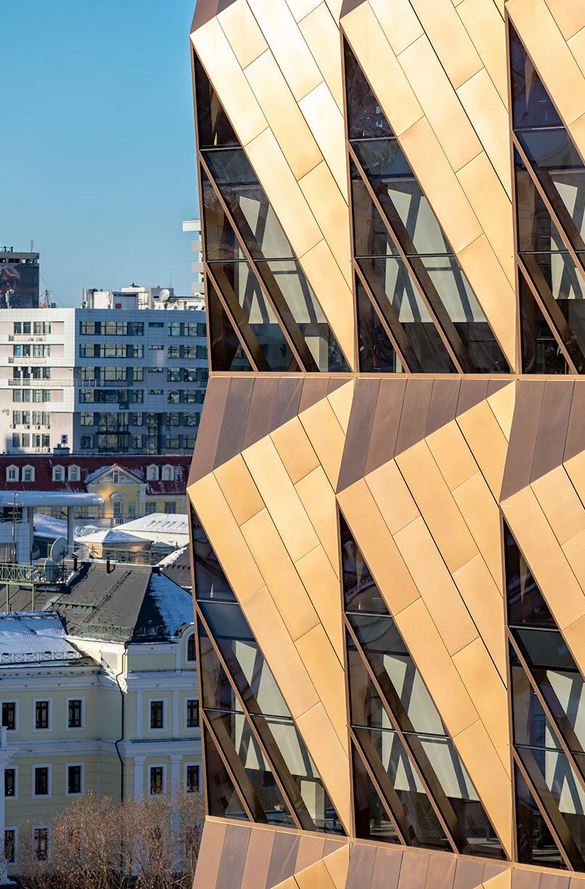
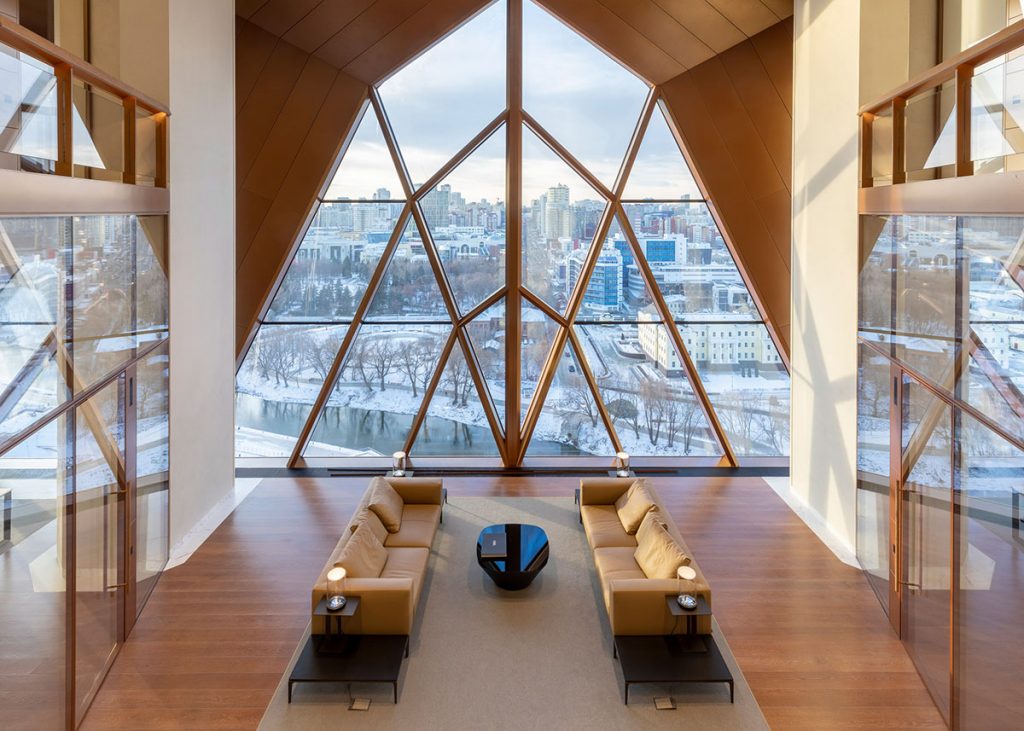
RCC headquarters by Foster + Partners
The double store cladding units reflect the construction of the two-storey interior modules, each of which comprises a pair of offices, stacked one on top of the other. This spatial organization was chosen by the team in order to reinvent the working space into a “house for staff”. Instead of the conventional large, communal workspace organization, inside there is a collection of innovative modular office units, organized at a more intimate, domestic scale.
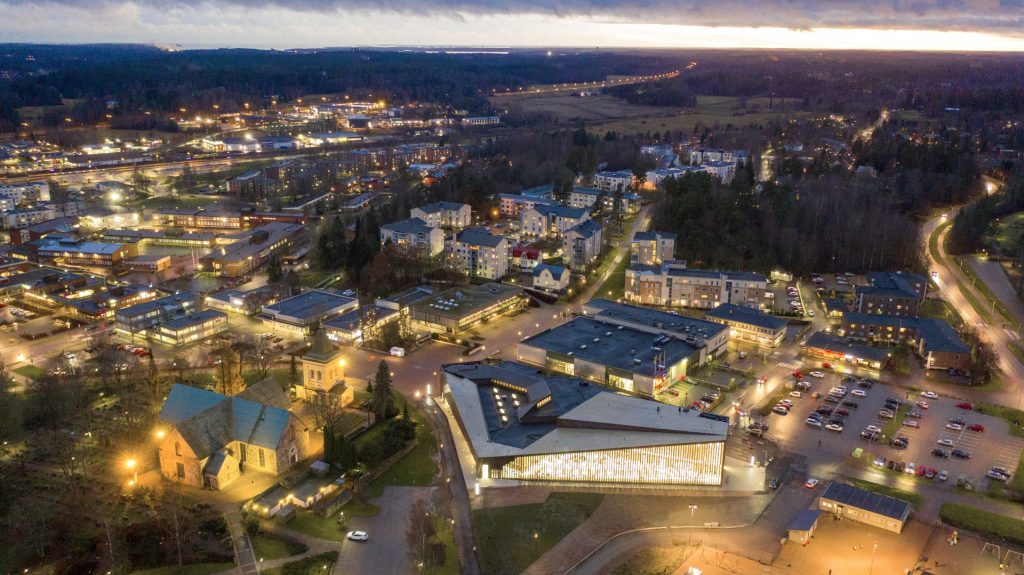
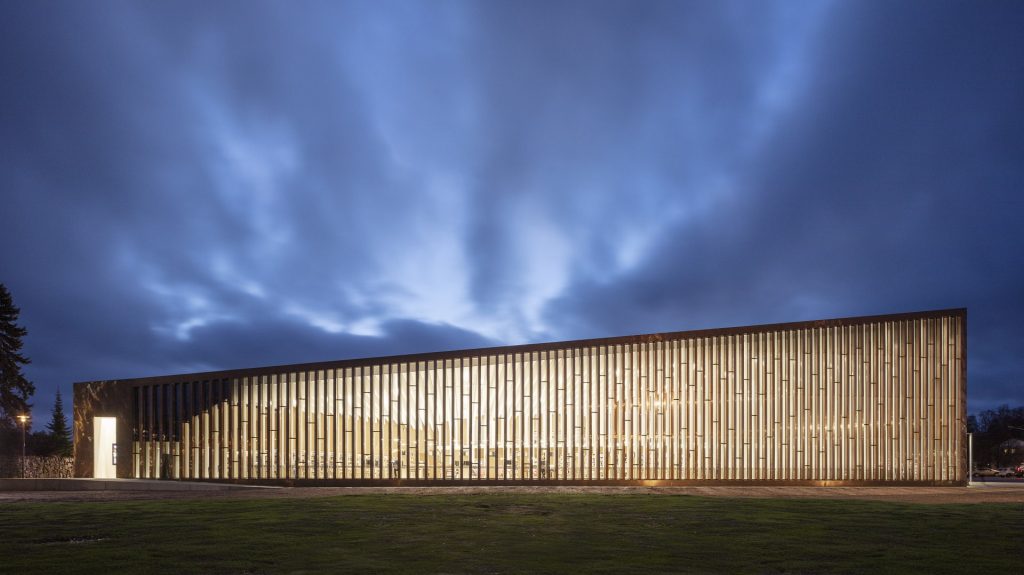
Kirkkonummi Library by JKMM Architects (also header image)
The coating pattern of the copper tiles in the Kirkkonummi Library, designed by the Helsinki-based practice JKMM Architects, seeks to create a counterpart to the town’s medieval stone church, while echoing its copper roof. Together, the two public buildings form the heart and brain of the small Finnish town of Kirkkonummi, demonstrating how copper represents permanence in a cultural building.
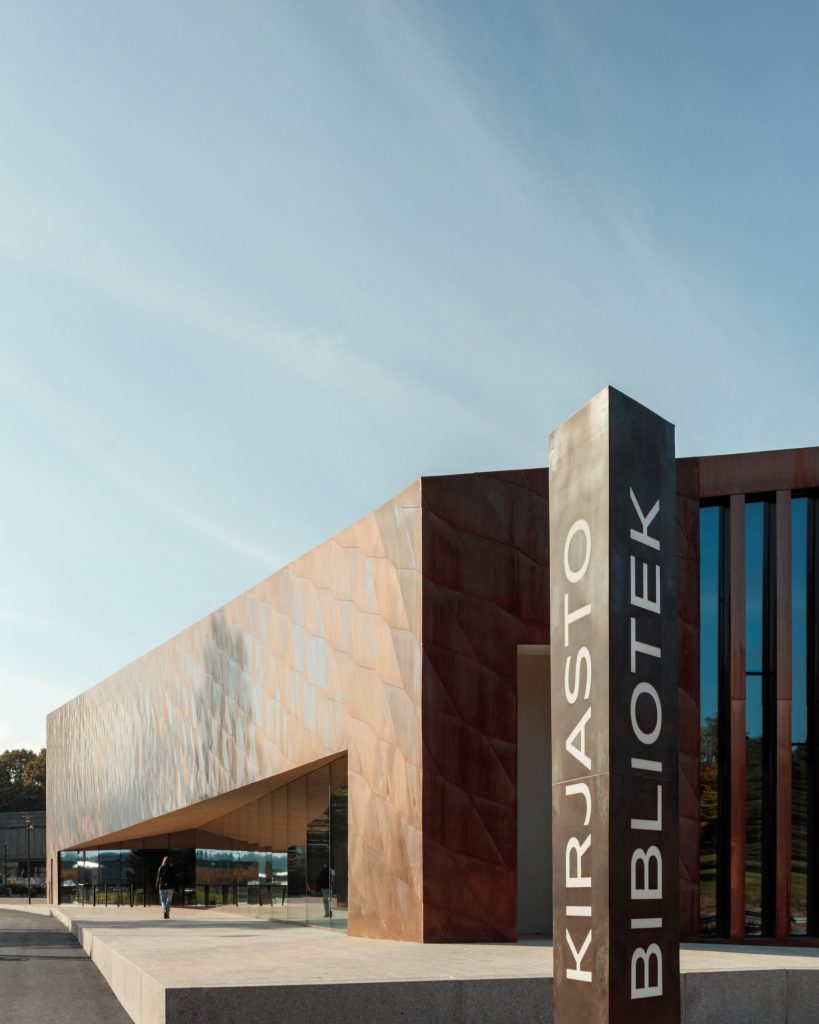
Kirkkonummi Library by JKMM Architects
Built as a part of the library renovation project, the contemporary copper shingle façade wraps both the original 1980s structure and the extension, which doubles the size of the existing library, creating a unified appearance. The copper cladding’s shingle pattern may bring to mind images of nets, paying homage to the city’s maritime heritage.
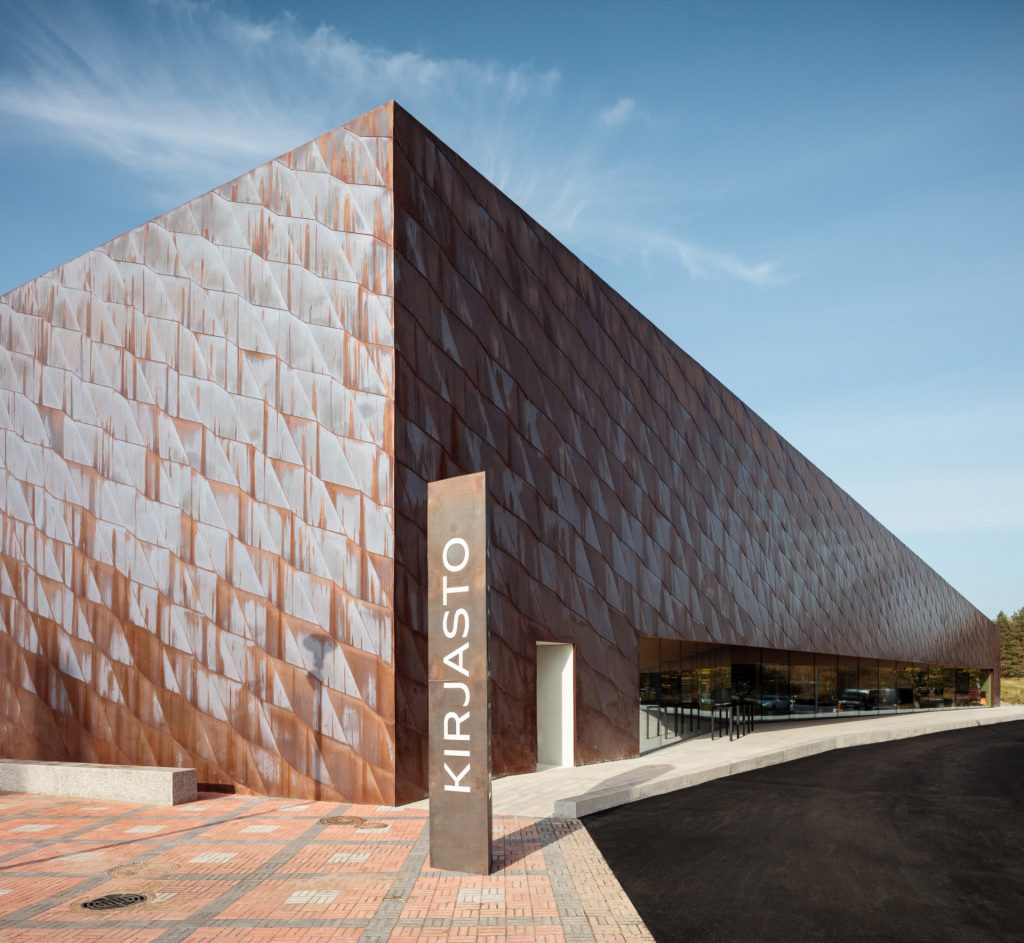
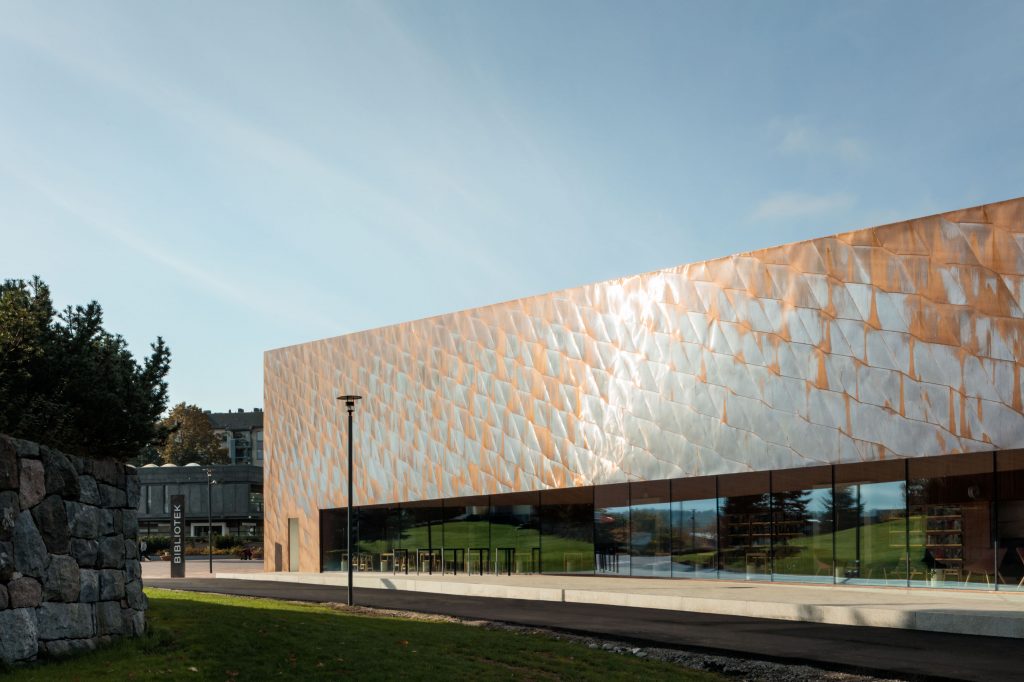
Kirkkonummi Library by JKMM Architects
The addition has a concrete structure, which curves around the main reading hall’s interior. The posts and beams of exposed concrete supporting the slotted windows of the hall filter natural light into the space to create an effect described by the studio as “daylight rippling through a forest of trees.” Alongside the reading room, the library contains a variety of community spaces including exhibition areas, spaces for events, rooms for toddlers and youth clubs, as well as a large cafe.
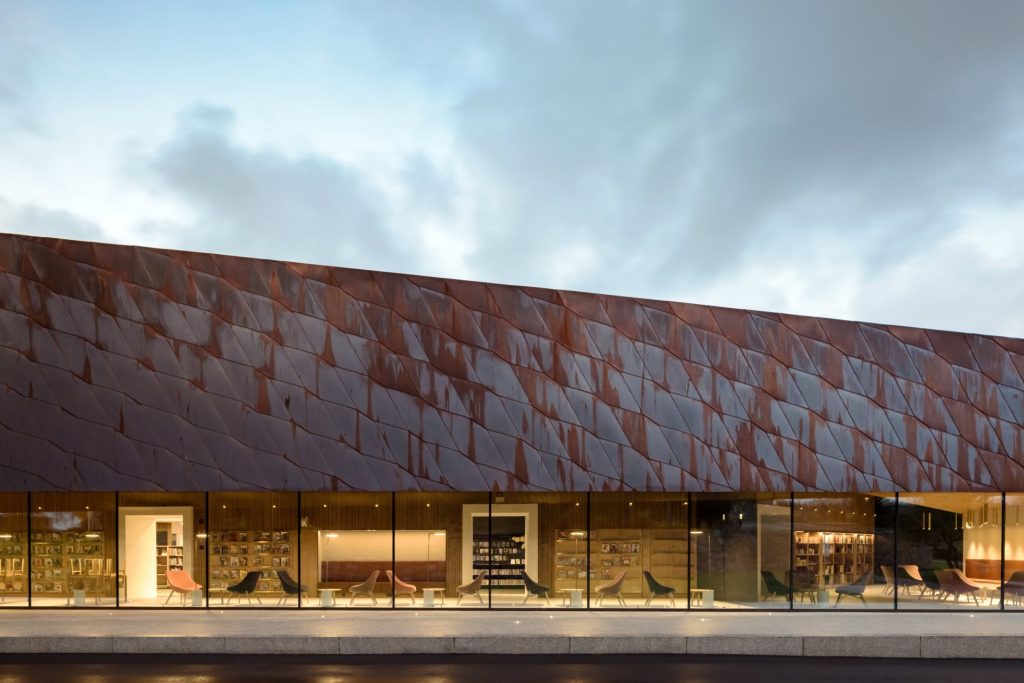
Kirkkonummi Library by JKMM Architects
Another, more informal reading room looks up towards the church tower and gives onto 50 meter long sheltered terrace. While, the terrace creates a connection between indoor and outdoor spaces, the oxidation of the material exposed to the elements further increases the integration of the building into its context over time.